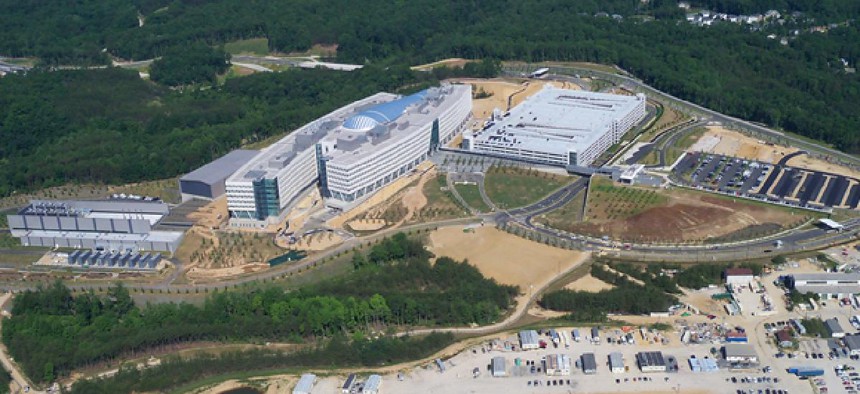
Fort Belvoir facilities have been involved in BRAC. U.S. Army
Military exceeds BRAC cost projections in relocating geospatial agency
GAO faults communication in $1.4 billion overrun.
The move to centralize components of the National Geospatial-Intelligence Agency at one site in Fort Belvoir, Va., has become the latest example of projects under the base closure and realignment process that have exceeded cost projections.
Consolidating scattered offices to enhance the satellite intelligence agency’s personnel safety cost $2.5 billion rather than the $1.4 billion projected by the 2005 BRAC report, according to a Government Accountability Office analysis that attributed the overrun to miscommunication about data storage space needs.
The relocation of some data storage capabilities into a facility known as the Technology Center ended up costing more than planned “because new requirements were added for supporting facilities that NGA identified as essential to mission operability,” a GAO auditor wrote in a June letter to congressional defense committees.
NGA officials acknowledged to GAO that their staff had limited experience establishing or working with consolidated data-storage facilities and the move began before the Office of Management and Budget issued its February 2010 guidance on data center consolidation. “Advances in data storage technology led NGA to revise downward the space in the technology center that it would need to fit out to accommodate its data storage needs,” the analysis said. As a result, NGA modified the original scope of work for the center during the course of construction, and “one of the two floors of the new building originally planned for data storage was not fitted out.”
Taking advantage of the full space would have gone beyond the BRAC requirements, so the scope of the project was changed, but without sufficient communication with the Office of the Secretary of Defense, the Army or Congress, auditors found.
“Army officials told us that they believed the Office of the Deputy Undersecretary of Defense for Installations and Environment was providing detailed oversight of the NGA project, including review and approval of changes in scope,” GAO said. “However, officials in the Office of the Deputy Undersecretary of Defense for Installations and Environment told us that since the Department of the Army had been assigned as the business manager, the Army was responsible for providing detailed oversight of the NGA project.”







